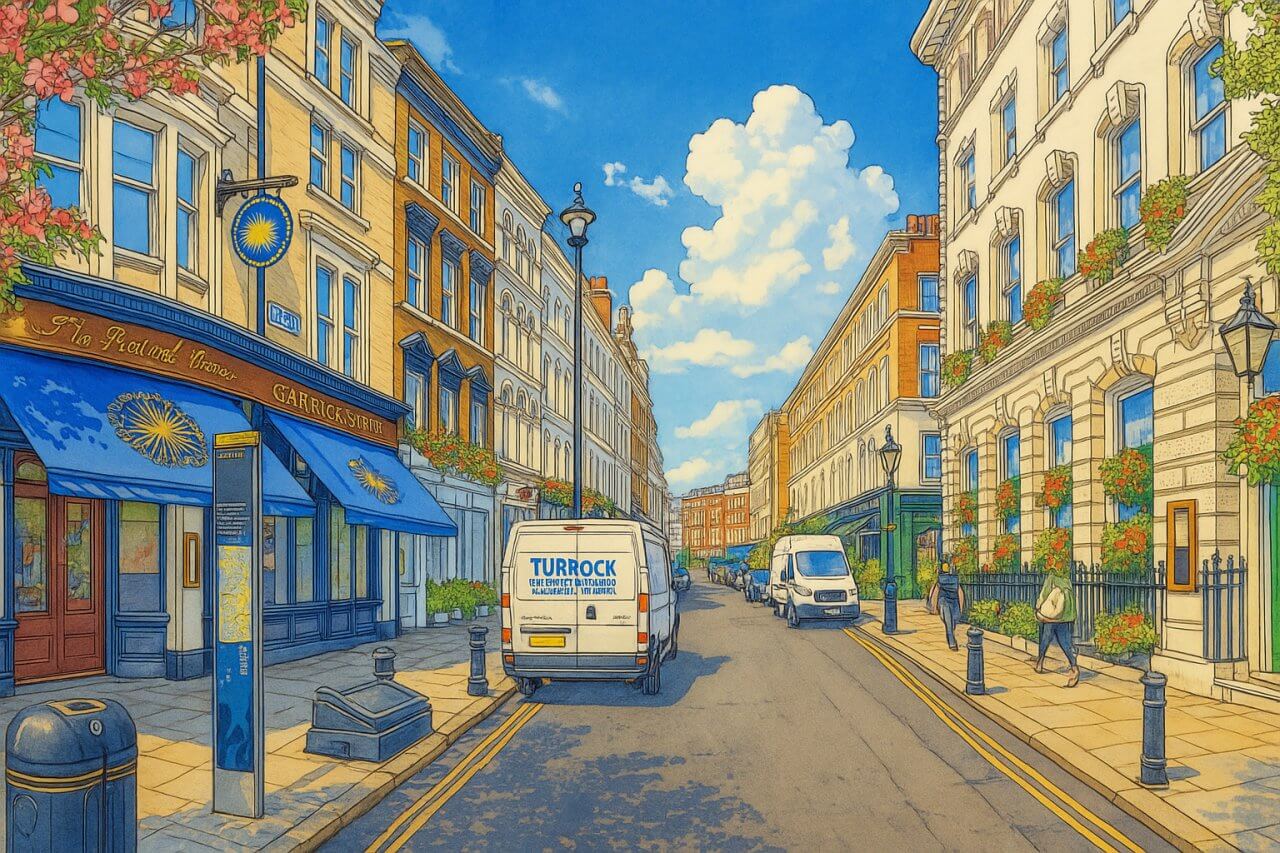
Garrick Street, London
Garrick Street is a short but historically rich street located in the heart of the West End of London, within the City of Westminster. It serves as a vital connector between major junctions, theatres, restaurants, and commercial hubs, making it both a cultural landmark and a bustling urban thoroughfare.
Location and Description
Garrick Street runs from the busy six-point junction that includes St Martin's Lane, Upper St Martin's Lane, Long Acre, Great Newport Street, and Cranbourn Street on its western end, to the four-point intersection with King Street, Bedford Street, and New Row at its eastern terminus. The street is relatively short, measuring just under 200 metres in length, but is heavily trafficked by pedestrians heading to and from Covent Garden, Leicester Square, and Charing Cross.
Pronunciation
The name "Garrick" is pronounced as GARR-ick, with emphasis on the first syllable. In the International Phonetic Alphabet (IPA), it is rendered as /ˈɡærɪk/.
History and Naming
Garrick Street was laid out in the 1860s as part of a series of Victorian-era urban improvements intended to relieve congestion in central London and improve east-west connectivity through Covent Garden. The street was named after David Garrick (1717–1779), one of the most influential English actors and theatre managers of the 18th century. Garrick was particularly associated with Drury Lane and helped elevate the status of theatrical performances during his time.
The name was officially adopted during the mid-19th century development that followed the demolition of older slum housing in the Covent Garden area. The creation of Garrick Street symbolised the Victorian ambition to impose order and elegance on the chaos of medieval street layouts.
Connecting Streets (Alphabetical Order)
- Bedford Street
- Cranbourn Street
- Great Newport Street
- King Street
- Long Acre
- New Row
- St Martin's Lane
- Upper St Martin's Lane
Nearby Attractions and Points of Interest
The location of Garrick Street puts it in close proximity to many of London’s most celebrated sights and entertainment venues. Within walking distance, you’ll find:
- The Garrick Club – A private gentlemen’s club named after David Garrick, located just off the street.
- Noël Coward Theatre – Located on St Martin’s Lane, just steps away.
- Covent Garden Market – A historic marketplace featuring shops, eateries, and street performances.
- Leicester Square – A major tourist destination with cinemas and event spaces.
Transport Connections
London Underground
The closest London Underground stations to Garrick Street are:
- Leicester Square Station (Northern and Piccadilly lines)
- Charing Cross Station (Northern and Bakerloo lines)
These stations are less than a five-minute walk away and provide excellent access to much of central London and beyond via the London Underground.
Bus Routes
Several bus stops lie close to Garrick Street, particularly along Charing Cross Road and Strand. Routes include:
- Bus 24 – Pimlico to Hampstead Heath
- Bus 29 – Trafalgar Square to Wood Green
- Bus 176 – Penge to Tottenham Court Road
Property Market
As of mid-2025, Garrick Street is considered prime central London real estate, particularly attractive for boutique commercial units and high-end residential flats. Properties here are typically compact but luxurious, reflecting their prestigious postcode.
Residential flats range from studio apartments of around 400 sq ft (37 sq m) to larger two-bedroom flats of up to 1,200 sq ft (111 sq m). The price to purchase such a property averages between £1.2 million and £3.5 million, depending on size and condition. Rental values for similar properties start at approximately £3,200 per month for a one-bedroom flat, going up to £6,500 or more for larger, refurbished units.
Commercial spaces—typically boutique shops, galleries, or small offices—are highly sought-after due to the steady footfall. Prime retail units along the street can command annual rents in excess of £200 per square foot1.
Fun Fact
Garrick Street is home to a commemorative blue plaque for David Garrick, located near the site of the former Garrick Theatre which once stood nearby. The plaque serves as a historical reminder of the street’s theatrical heritage and its namesake’s enduring legacy.
Quick Facts
- Location: West End, City of Westminster, London
- Length: Approx. 200 metres
- Pronunciation: GARR-ick (/ˈɡærɪk/)
- Named After: David Garrick, actor and theatre manager
- Built: 1860s as part of urban improvement works
- Connecting Streets: Bedford Street, Cranbourn Street, Great Newport Street, King Street, Long Acre, New Row, St Martin's Lane, Upper St Martin's Lane
- Nearest Underground Stations: Leicester Square, Charing Cross
- Nearby Bus Routes: 24, 29, 176
- Notable Attractions: Garrick Club, Covent Garden, Noël Coward Theatre
- Residential Property Prices (2025): £1.2M–£3.5M
- Rental Prices (2025): £3,200–£6,500+ per month
References
Map of Garrick Street, London
 Painting of Garrick Street, London
Painting of Garrick Street, London